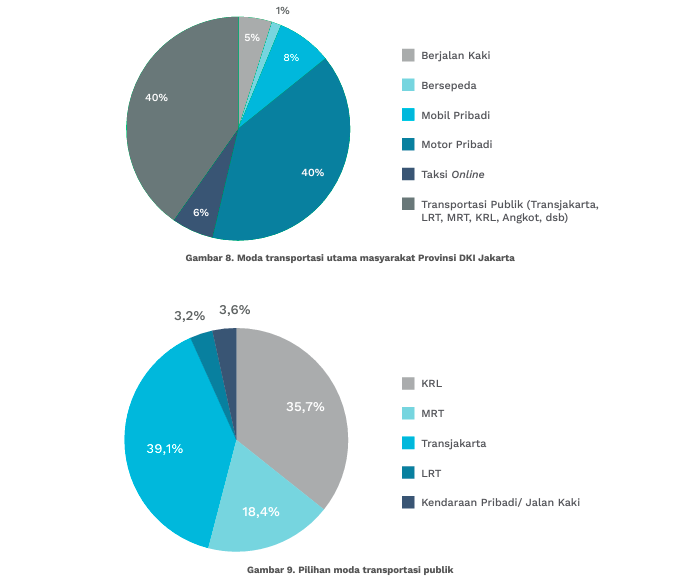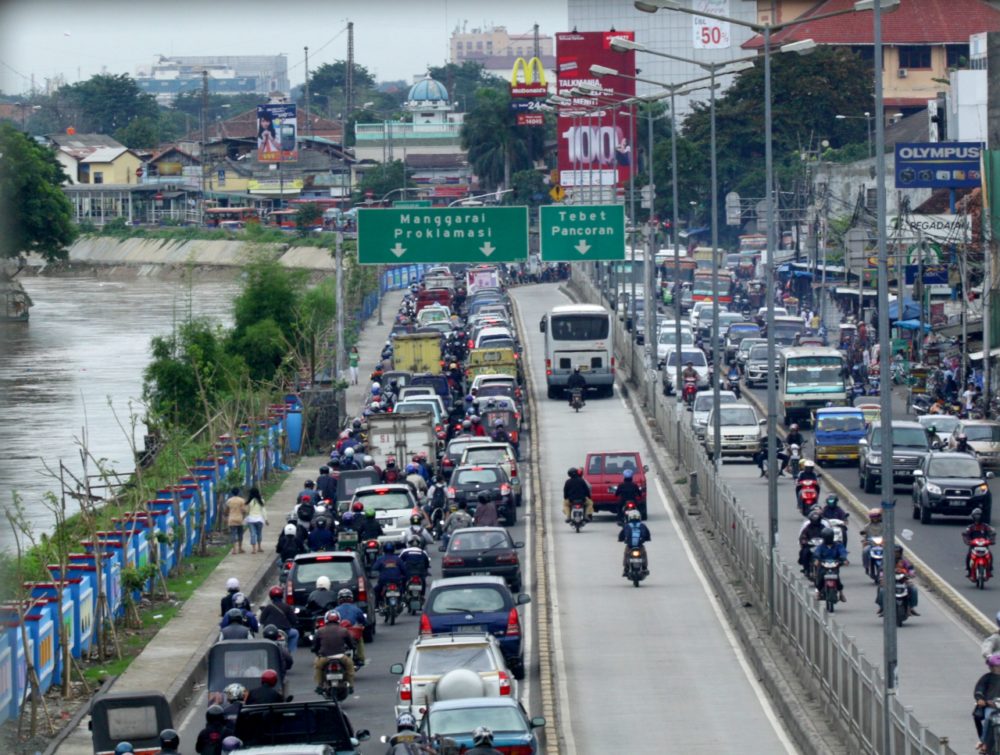Jakarta administration needs to reach beyond its current policies and program if it were to achieve its zero-emission target by 2050.
The zero transportation emissions target by the Jakarta administration is unlikely to be achieved under current policies and programs, says a report entitled “Transformasi Transportasi Jakarta: Mengkaji Ulang Target Emisi Nol Sektor Transportasi Tahun 2050” (The Transformation of Transportation in Jakarta: Reviewing the zero emission target of transportation for 2050) .
The report, produced by Greenpeace Indonesia and Resilience Development Initiative (RDI) and launched at the Goethe Institute, in Jakarta, Wednesday (14/12/2022) explores four scenarios to come to that conclusion.
The first scenario is a business as usual, where emissions in Jakarta will by 2050, actually double its current emission level of around 46 million tons CO2e. The largest contributors to the emissions are cars at 36 percent and motorcycles at 47 percent.
The second scenario involves a government intervention through policies and a change in people’s behavior. This is believed to be able to reduce emission by 4.5 million tons of CO2e from 2020 emission level. The reduction is due to better technologies, a change in behavior where more people use public transportation, or walk or cycle for short distances.
“A reduction in emission is also attained with the transition to renewable energy such as the use of electric vehicles, in line with the 2030 target for energy mix,” the report said.
The third scenario involves electrification and the use of renewable energy. This scenario is believed to result in a higher emissions reduction rate than those under the programs of the central governments or the Jakarta government.
Electrification and the use of renewable energy is estimated to be able to reduce emissions by 10 million tons of CO2e compared to emissions in 2020.
This result is contingent on a reduction in the number of private vehicles and a rise in public transportation passengers by 1.8 to two million in a day, a 31 percent energy mix, and an almost 100 percent conversion to electric vehicles by 2050.
The fourth scenario, involves a massive transformation of people’s behavior and great reductions in the number of motorized vehicles that will produce emission of 2.6 million tons of CO2e, the lowest among the four scenarios.
It requires the transformation in behavior as well as a reduction in the number of cars by 2.5 million units and 12.5 million motorcycles by 2050. It also relies on a 100 percent use of renewable energy to reduce emissions from power plants.

The Greenpeace Indonesia and RDI study shows that the zero transportation emission target of the Jakarta government would not be achieved and the most it could score under current policies and programs was an 88.5 percent reduction, or 20.2 million tons of CO2e from the current emission level.
“One of the conclusions of this study is the massive switch from personal vehicles to public transportation and emphasizes the use of renewable energy,” Elisabeth Rianawati, a senior research fellow at RDI said at the release of the report.
Leonard Simanjuntak, Greenpeace Indonesia Country Director says the strengthening of electric mass transportation systems is needed because it would be impossible to reach the targeted net zero transportation emission by only switching from 20 million fuel-based vehicles to 20 million electric vehicles.
The government also needs to accelerate and maximize the use of renewable energy with a decentralization system.
“Homes can charge their own electric cars. At a more massive scale, we need the massive use of solar power generators in public facilities at a massive scale too. And this should also provide the electricity for the mass public transportation,” Leonard said when interviewed by Ekuatorial at the Goethe Institute in Jakarta, on Wednesday (14/12/2022).
Other recommendations by the report:
- Increase actions by all stakeholders to change the habits and behavior of vehicle users towards an increasingly lower carbon emission mode .
- Reduce the number of personal vehicles and changing behavior to favor the use of public transports.
- Expand the coverage of public transportation services so that people can reach their destination without having to change their mode of transportation.
- Provide and improve the quality of pedestrian infrastructure as a last mile.
- Retire coal power plants around Jakarta and transition into using renewable energy by 2030 and 2036 in line with the road map designed by the central government.
Yayat Sudrajat, head of Road Transportation of the Jakarta Transportation office says that the city administration has changed its approach from formerly building facilities and infrastructure to restricting movements. He called such an approach a Transit Oriented Development (TOD).
The restriction is done through a number of strategies, including prioritizing pedestrians, public transport, environmentally-friendly vehicles and restricting the movement of personal vehicles.
In the public transportation sector, the Jakarta administration not only integrated facilities and infrastructure but also made public transportation fares cheaper than the cost of using personal vehicles. The movement restriction will continue to be carried out even after the country realizes its electric vehicle program.
“If it is not restricted, pollution may not be there anymore but traffic congestion will remain,” he said.
Oswar Mungkasa, Senior Planner of the National Development Planning Agency Bappenas, said that limiting movements can be achieved only if there was a collaboration and cooperation between the Jakarta government, PT KAI, Trans Jakarta and MRT to expand public transportation networks.
Cooperation also needs to be forged between the districts and municipal governments around Jakarta because a total of 1,7 million people commute to and from the capital on a daily basis.
